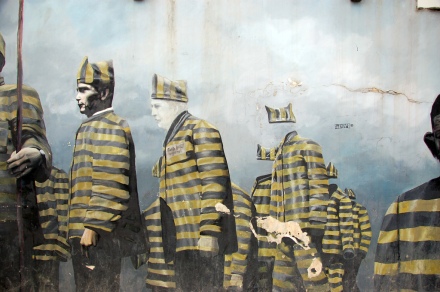by Rachel Wicks
First, I would like to take a moment to apologize for the posting inconsistency during the past few weeks. I have been extremely sick for the past month and it is unbelievably difficult to compose literature articles with a 101 degree fever.
I’m still not recovered in the slightest, but I refuse to let my responsibilities towards this blog slip through the cracks during the end-of-semester rush. Therefore, without further ado, I would like to discuss active reading strategies.
During my time as the intern for the CLTL blog, there has been one main idea that I have seen continuously referred to again and again: putting one’s self in the shoes of a fictional character. I first encountered this idea when I personally attended one of the CLTL meetings held at UMass Dartmouth, which you can read about here.
When I first started working for the CLTL, I was still rather uncertain on how exactly literature was being used as a means of alternative sentencing. I did not see how reading books could have an effect strong enough to be a form of sentencing in the first place, but on the day I attended the CLTL meeting in person, I finally understood that what makes reading such a powerful method of change is that the readers are being encouraged to actively identify with the characters in the story.
Therefore, I came to the conclusion that members of the CLTL program, both attendees and facilitators alike, undoubtedly benefit from directly employing active reading strategies.
The main strategy in place by the CLTL, of course, is the aforementioned character relating. Most books are written so that the main character is set up to be someone that anyone can relate to, whether the reader is identifying with the situation of the character, the personality, the background, the dialogue, the emotion, etc.
More often than not, the main way that writers can make their characters relatable is by placing them in situations of failure. For example, The Old Man and the Sea would be pretty boring if Santiago had caught that fish on his very first try. It’s through this character’s struggle to succeed that we relate, as opposed to the success itself, since struggle is far more universal than success is.
However, there may one day be a case where relating to a character may be particularly difficult. If this is the case, it can probably be safely assumed that this is a purposeful choice by the writer, but even so it may be necessary to actively force oneself to think from that character’s perspective, instead of being able to slip into their shoes and see out their own two eyes with ease.
Forcing oneself to relate may be difficult at times, but I would argue that stories that are a little harder to relate to can be some of the most powerful. Throughout my readings over the years, I’ve noticed a pattern. When an author writes a character to be particularly unlikable, to the point where one cannot see themselves as the character, this character often undergoes a catharsis throughout the course of the story, and suddenly the reader, who was once so against this character, finds himself sympathetic to the character as they undergo emotional change.
Perhaps the character starts out cold hearted but, in the end, finds love. Perhaps a character begins with an embedded idea that no one is to be trusted, but as the story goes on, they learn to trust and understand that it’s okay to rely on others.
No matter the case, if you encounter a character who, unlike other stories you may have read, is essentially a gaping void of where human empathy should be, watch how they change over time. It’s quite possible that you might find yourself changing with them.







